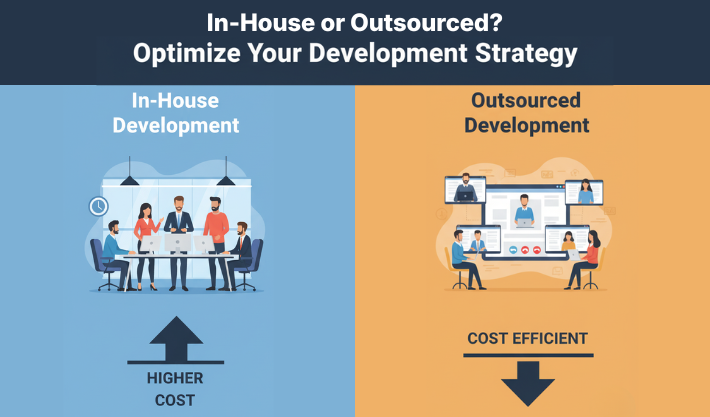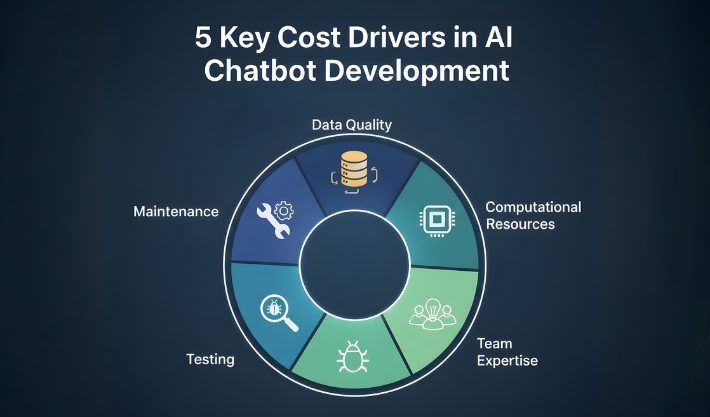

The cost to develop a chatbot app like ChatGPT ranges from $100,000 to $500,000+, depending on features, AI model complexity, and infrastructure.
Creating a chatbot such as ChatGPT needs thorough planning, technical knowledge, and a properly outlined budget. Numerous companies and developers are keen to know how to create a chatbot that can comprehend and respond to human language. Development costs vary on several factors, including AI model complexity, data processing, and deployment infrastructure. If you are looking to create a chatbot, knowing the cost structure is critical.
This blog will give a straight-forward analysis of what it costs to develop an AI such as GPT and measures to make the budget as efficient as possible.
| Development Stage | Description | Estimated Cost |
|---|---|---|
| Research and Planning | Conducting market analysis, competitor research, and defining chatbot objectives | $5,000 – $20,000 |
| AI Model Development | Selecting AI frameworks, training models, and acquiring high-quality datasets | $10,000 – $100,000+ |
| Integration and Testing | Integrating chatbot with platforms, debugging errors, and optimizing response accuracy | $10,000 – $50,000 |
| Deployment & Maintenance | Hosting, performance monitoring, security updates, and periodic retraining of AI models | $10,000 – $50,000 |
| Total Cost Estimate | Overall budget for building a chatbot with AI capabilities | $100,000 – Millions |

Developing a chatbot involves AI engineers, software developers, and UI/UX designers. Salaries differ according to expertise and location, adding substantially to overall development costs.
An in-house team calls for infrastructure and full-time wages, whereas outsourcing to agencies saves costs but necessitates vendor selection for quality and timely project delivery.
The Development of AI requires sophisticated software libraries such as TensorFlow or PyTorch. Cloud services, API integrations, and paid tools contribute to the entire chatbot development budget.
Adequate testing confirms the accuracy and effectiveness of chatbots. Developers utilize testing platforms, simulators, and debugging tools, contributing to the total budget of chatbot development and fine-tuning.
AI chatbots require stable hosting to deploy. Cloud platforms like AWS, Google Cloud, or Azure offer scalable infrastructure but entail ongoing operational and maintenance costs.

AI models need to be constantly updated to enhance chatbot responses. Updating algorithms, patching security holes, and improving chatbot accuracy contribute to long-term operational expenses.
The effortless functionality of the chatbot requires monitoring the performance of servers and debugging. Spending on monitoring mechanisms ensures chatbot effectiveness but adds to costs.
With growing users of chatbot companies must scale cloud resources and server capacity. Scaling chatbot infrastructure guarantees seamless user interactions but contributes to cloud service expenses.
Periodic retraining of AI-powered chatbots with fresh datasets is necessary. Chatbot model updating enhances response precision but necessitates further computing power and data processing expenditures.
Chatbot security entails the implementation of data encryption, regulatory compliance, and cyber threat prevention. Chatbot interactions need to be secured through ongoing investment in cybersecurity solutions.
Developing a chatbot like ChatGPT requires careful budgeting and strategic planning. The cost depends on multiple factors, including AI model complexity, infrastructure, and development team expertise. Cloud computing, pre-trained AI models, and outsourcing can help reduce costs. Companies must also consider ongoing maintenance and scaling expenses.
Ready to build a powerful AI chatbot like ChatGPT? WebOsmotic specializes in high-performance web, mobile, and AI solutions that drive business success. Contact us today to bring your AI vision to life.
The expense varies from $100,000 to a few million dollars based on AI complexity, data processing, cloud infrastructure, and the development team’s expertise.
Major drivers are data collection, AI model training, cloud computing, developer salaries, integration, testing, maintenance, and scalability to process high volumes of user interactions.
An in-house team provides control but is costly. Outsourcing saves costs while providing expertise, quicker development, and access to pre-trained AI models.
Monthly maintenance fees are between $5,000 and $50,000, including software upgrades, retraining of AI models, fixing bugs, monitoring performance, and cybersecurity.
Cloud solutions provide flexibility, reduced capital expenditure, and scalable pricing, whereas on-premises infrastructure is more secure but entails initial high capital expense and upkeep.